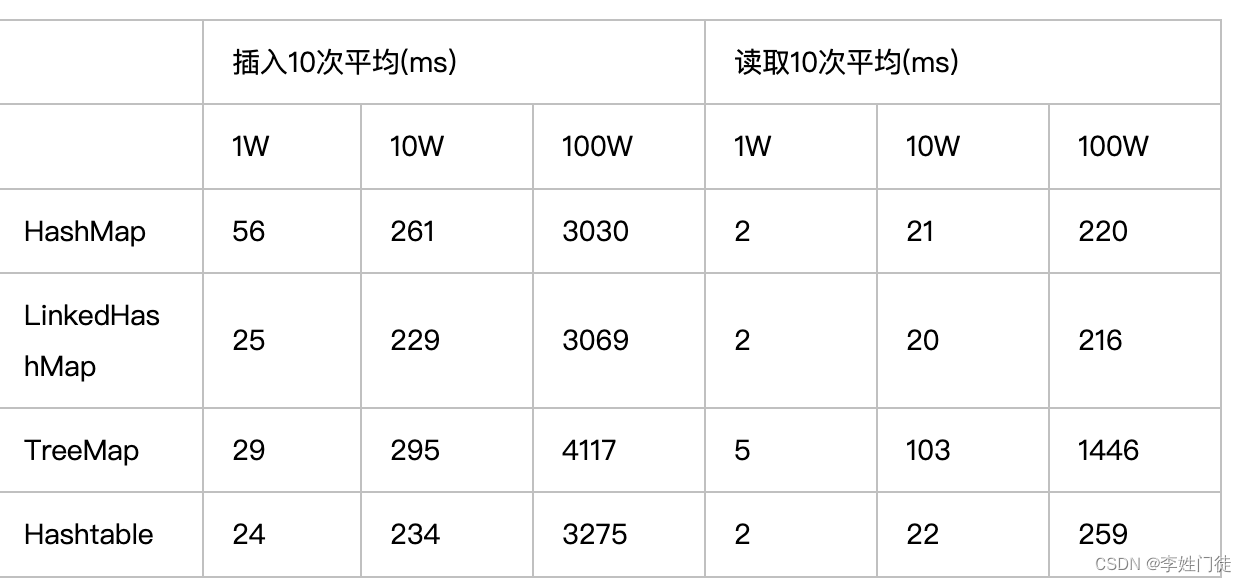一文详解Pandas
一、Pandas概述
Pandas是另外一个用于处理高级数据结构和数据分析的Python库,Pandas是基于Numpy构建的一种工具,,纳入了大量的模块和库一些标准数据模型,提高了Python处理大数据的性能。
特点:
- DataFrame是一种高效快速的数据结构模式,Pandas支持DataFrame格式,从而可以自定义索引
- 可以将不同格式的数据文件加载到内存中
- 未对齐及其索引方式不同的数据可按轴自动对齐
- 可处理时间序列或非时间序列数据
- 可基于标签来切片索引,获得大数据集子集
- 可进行高性能数据分组、聚合、添加、删除
- 灵活处理数据缺失、重组、空格
Pandas广泛用于金融、经济、数据分析、统计等商业领域,为各个领域数据从业者提供了便捷。
Pandas的安装与Numpy相似,如果你已经安装了Anaconda,那么直接导入即可,
pip install pandas
import pandas as pd
二、Pandas数据结构
Pandas被广泛使用的数据结构主要有Series和DataFrame,两者皆为python进行数据分析提供了基础
2.1 Series
series类似于一维数组,由一组数据产生,Series数组由数据和索引标签组成,索引在左侧,值在右侧。创建Series,可以使用Series函数。
import pandas as pd
# 将列表作为数据导入 转换成Series
s1 = pd.Series([1,2,3,4,5])
print('s1:{}'.format(s1)) # 格式化字符串函数 str.format()
s1:0 1
1 2
2 3
3 4
4 5
dtype: int64
补充:这里用到了格式化字符串的函数str.format(),增强了字符串格式化的功能,其基本语法是通过{} 和 :来代替之前的% ,format函数可以接受若干个参数,位置可以不按照顺序
左边的列表表示索引,右边的列表表示值,默认从0开始创建索引,可以指定索引,设置index参数。
import pandas as pd
s2 = pd.Series([1,2,3,4,5],index = ['第一','第二','第三','第四','第五'])
print('s2 : {}'.format(s2))
s2:第一 1
第二 2
第三 3
第四 4
第五 5
dtype: int64
通过Series的values和index属性可以获取Series中的索引和数值
import pandas as pd
s2 = pd.Series([1,2,3,4,5],index = ['第一','第二','第三','第四','第五'])
print('s2:{}'.format(s2))
print('s2索引:{}'.format(s2.index))
print('s2数值:{}'.format(s2.values))
s2:第一 1
第二 2
第三 3
第四 4
第五 5
dtype: int64
s2索引:Index(['第一', '第二', '第三', '第四', '第五'], dtype='object')
s2数值:[1 2 3 4 5]
每一个数组都有与之对应的索引,所以在Series中,可以通过索引的方式选取或者修改Series的数值。但是index对象是不可以修改的,这样才可以保证index对象在多个数据结构中共享
print('s2中 第二 对应的数值: {}'.format(s2['第二']))
s2['第二'] = 10
print('s2中 第二 对应的数值: {}'.format(s2['第二']))
s2中 第二 对应的数值: 2
s2中 第二 对应的数值: 10
print('s2中 第二第四第五 对应的数值: {}'.format(s2[['第二','第四','第五']]))
s2中 第二第四第五 对应的数值: 第二 10
第四 4
第五 5
dtype: int64
如果对于连续索引,可以使用冒号进行设置:
print('s2中 第二到第五 对应的数值:{}'.format(s2['第二':'第五']))
s2中 第二到第五 对应的数值:第二 10
第三 3
第四 4
第五 5
dtype: int64
注意:这里的切片与Python中的切片是不一样的,Series的切片末端元素是包含在内的,所以末端元素仍然可以被输出
(3)字典类型创建Series
前面都是使用列表数据类型创建Series,也可以使用字典数据类型创建Series,
s3_dic = {'First':1,'Second':2,'Third':3,'Fourth':4,'Fifth':5}
s3 = pd.Series(s3_dic)
print('s4: {}'.format(s3))
s4: First 1
Second 2
Third 3
Fourth 4
Fifth 5
dtype: int64
可以看到,直接使用字典数据类型数据创建Series,字典中key对应Series的索引,字典的value对应Series的数值。Series数组的排列按照索引首字符顺次进行排序,如果希望按照指定顺序进行排序,可在Series创建时传入一个index列表,就像使用列表创建Series一样
s4_dic = {'First':1,'Second':2,'Third':3,'Fourth':4,'Fifth':5}
s4 = pd.Series(s4_dic,index = ['First','Second','Third','Fourth','Fifth'])
print('s4:{}'.format(s4))
s4:First 1
Second 2
Third 3
Fourth 4
Fifth 5
dtype: int64
可用于字典中的某些函数,比如in not in 可以用于Series数组的索引中
print('s4 中含有 sixth:{}'.format('sixth' in s4))
print('s4中不含有sixth:{}'.format('sixth' not in s4))
s4 中含有 sixth:False
s4中不含有sixth:True
如果传入的index参数中含有原字典中不含有的索引标签,那么索引参数与数据字典value值无法匹配成功。未匹配成功的index对应的数值位置就记录为空,用NAN来表示,代表缺失值,可以用is null 和 not null函数判断是否存在缺失值
s4_dic = {'First':1,'Second':2,'Third':3,'Fourth':4,'Fifth':5}
s4 = pd.Series(s4_dic,index = ['First','Second','Third','Fourth','Tenth'])
print('s4:{}'.format(s4))
s4:First 1.0
Second 2.0
Third 3.0
Fourth 4.0
Tenth NaN
dtype: float64
Tenth在原来的字典中不存在相应的键值对,所以生成Series时,索引Tenth对应的值就是空的。
print('数据缺失:{}'.format(s4.isnull()))
print('数据不缺失:{}'.format(s4.notnull()))
数据缺失:First False
Second False
Third False
Fourth False
Tenth True
dtype: bool
数据不缺失:First True
Second True
Third True
Fourth True
Tenth False
dtype: bool
(4)Series的算术运算
不同的Series数组间可做算术运算,在算数运算中,不同的索引对应的数据会自动的对齐。
print('s3 + s4: {}'.format(s3 + s4))
s3 + s4: Fifth NaN
First 2.0
Fourth 8.0
Second 4.0
Tenth NaN
Third 6.0
dtype: float64
可以看到相应索引处的数值实现了加法运算,s4中Tenth和S3中的Fifth分别做NAN缺失处理。
2.2 DataFrame数据结构
DataFrame是Pandas中的另外一种数据结构,与Series数组结构不同的是,DataFrame是二维表格型结构,既含有行索引,又包含列索引,每一列的元素可能是不同类型的数据,例如字符串、整形数据、布尔类型数据。
(1)DataFrame的创建
DatAFrame的创建与Series类似,可以直接使用函数pd.DataFrame传入一个列表或者字典。
创建DataFrame的代码:
df_dic = {'color':['red','yellow','blue','purple','pink'],'size':['medium','small','big','medium','small'],'taste':['sweet','sour','salty','sweet','spicy']}
df = pd.DataFrame(df_dic)
print(df)
color size taste
0 red medium sweet
1 yellow small sour
2 blue big salty
3 purple medium sweet
4 pink small spicy
解析:每一组数据都自动的添加了索引,序列按照列名称首字母进行排序,如果希望设置排序,可以在pd.DataFrame()函数中传入columns参数。这个就类似于Series中的index列表
df1 = pd.DataFrame(df_dic,columns = ['taste','color','size'])
print(df1)
taste color size
0 sweet red medium
1 sour yellow small
2 salty blue big
3 sweet purple medium
4 spicy pink small
如果传入的columns中含有与源字典数据key值不匹配的列名称时,该列会被记作NAN列。
df1 = pd.DataFrame(df_dic,columns = ['taste','color','size','category'])
print(df1)
taste color size category
0 sweet red medium NaN
1 sour yellow small NaN
2 salty blue big NaN
3 sweet purple medium NaN
4 spicy pink small NaN
DataFrame的表头可以设置列索引名称的标题和行索引名称的标题,需要使用name函数进行设置。
df1.index.name = 'sample'
df1.columns.name = 'feature'
print(df1)
feature taste color size
sample
0 sweet red medium
1 sour yellow small
2 salty blue big
3 sweet purple medium
4 spicy pink small
这里为列名称设置了feature,为索引名称设置了sample
使用values函数可以获得DataFrame中的所有数据,以二维数组的形式返回(数组与列表的区别是逗号)
print('df1的values值为: {}'.format(df1.values))
df1的values值为: [['sweet' 'red' 'medium']
['sour' 'yellow' 'small']
['salty' 'blue' 'big']
['sweet' 'purple' 'medium']
['spicy' 'pink' 'small']]
(2)DataFrame的索引
print('df1中的color列: {}'.format(df1['color']))
print('df1中的color列: {}'.format(df1.color))
df1中的color列: sample
0 red
1 yellow
2 blue
3 purple
4 pink
Name: color, dtype: object
df1中的color列: sample
0 red
1 yellow
2 blue
3 purple
4 pink
Name: color, dtype: object
对于行方向上的索引,如果希望获取某一行,可以使用行索引字段ix。
print(df1.ix[3])
feature
taste sweet
color purple
size medium
Name: 3, dtype: object
通过DatAFrame数据的索引,可对特定的数组进行修改。
import numpy as np
df1['category'] = np.arange(5)
print(df1)
feature taste color size category
sample
0 sweet red medium 0
1 sour yellow small 1
2 salty blue big 2
3 sweet purple medium 3
4 spicy pink small 4
可以看到使用Numpy生成一维数组,然后直接填补DataFrame的一列
但是如果只是想填补其中的部分数值,可精确匹配DataFrame中缺失值的索引,然后填补缺失值
import numpy as np
df1['category'] = pd.Series([2,3,4],index = [0,2,4])
print(df1)
feature taste color size category
sample
0 sweet red medium 2.0
1 sour yellow small NaN
2 salty blue big 3.0
3 sweet purple medium NaN
4 spicy pink small 4.0
df1['country'] = pd.Series(['China','UK','USA','Australia','Japan'])
print(df1)
feature taste color size category country
sample
0 sweet red medium 2.0 China
1 sour yellow small NaN UK
2 salty blue big 3.0 USA
3 sweet purple medium NaN Australia
4 spicy pink small 4.0 Japan
DataFrame中可以使用布尔型数组选取行:
print(df1[df1['category'] < 3])
feature taste color size category country
sample
0 sweet red medium 2.0 China
这里选取了category小于等于3的样本数据,用到了列索引,所以也可以写成df1.category
二、数学与统计计算
Pandas是一个高性能的数据计算库,其中包含一些高效处理数学以及统计运算的函数
Pandas提供了对Series和DataFrame进行汇总统计的函数,比如求和,求平均数、求分位数。
DataFrame数学统计函数:
首先创建一个DataFrame,这里使用二维列表进行创建,不仅指定了index,而且指定了columns
df5 = pd.DataFrame([[3,2,3,1],[2,5,3,6],[3,4,5,2],[9,5,3,1]],index = ['a','b','c','d'],columns = ['one','two','three','four'])
print(df5)
one two three four
a 3 2 3 1
b 2 5 3 6
c 3 4 5 2
d 9 5 3 1
使用DataFrame中的sum函数将会返回一个按列或者按行求和的的Series。
print('按列求和: {}'.format(df5.sum()))
print('按行求和: {}'.format(df5.sum(axis = 1)))
按列求和: one 17
two 16
three 14
four 10
dtype: int64
按行求和: a 9
b 16
c 14
d 18
dtype: int64
print('从上到下累计求和: {}'.format(df5.cumsum()))
print('从左往右累计求和: {}'.format(df5.cumsum(axis = 1)))
从上到下累计求和: one two three four
a 3 2 3 1
b 5 7 6 7
c 8 11 11 9
d 17 16 14 10
从左往右累计求和: one two three four
a 3 5 8 9
b 2 7 10 16
c 3 7 12 14
d 9 14 17 18
Pandas还定义了其他DataFrame的统计指标,下面就列出相关数据统计函数。
| 统计函数 | 解释 |
|---|---|
| mean | 均值 |
| median | 中位数 |
| count | 非缺失值数量 |
| min、max | 最大最小值 |
| describe | 汇总统计 |
| var | 方差 |
| std | 标准差 |
| skew | 偏度 |
| kurt | 峰度 |
| diff | 一阶差分 |
| cumin、cumax | 累计最大值、累计最小值 |
| cumsum、cumprod | 累计和、累计积 |
| cov、corr | 协方差、相关系数 |
三、DataFrame的文件操作
Pandas提供了多种读取文件函数和写入文件函数,可将原始数据文件转换成DataFrame类型的数据结构
3.1 读取文件
| 读取数据文件函数 | 解释 |
|---|---|
| pd.read_csv(filename) | 从csv文件导入数据,默认分隔符为“,” |
| pd.read_table(filename) | 从文本文件导入数据,默认分隔符为制表符 |
| pd.read_excel(filename) | 从Excel文件导入数据 |
| pd.read_sql(query,connection_object) | 从SQL表/库中导入数据 |
| pd.read_json(json_string) | 从json文件导入数据 |
| pd.read_html(url) | 解析url、字符串或者HTML文件,提取数据表格 |
| pd.DataFrame(dict) | 从字典对象中读入数据 |
pd.read_csv('df.csv',encoding = 'utf-8')
第一个参数时原数据文件的存储路径,这里的数据文件存储在当前目录下,encoding参数用于设置编码方式,这里设置为utf-8
3.2 写入文件
| 读取数据文件函数 | 解释 |
|---|---|
| pd.to_csv(filename) | 导入数据至csv文件 |
| pd.to_excel(filename) | 导入数据至excel文件 |
| pd.to_sql(table_name,connection_object) | 导入数据至SQL表 |
| pd.to_json(json_string) | 导出数据为json格式 |
| pd.to_html(url) | 导出数据为html文件 |
| pd.to_clipboard(filename) | 导出数据到剪切板 |
df.to_csv('df.csv',seq = ',',header = True,index = True,encoding = 'utf-8')
第一个参数为写入文件路径,这里表示写入当前目录,seq参数用于设置写入文件的分隔符,header参数表示写入文件是否写入标题行,默认值为True,index参数表示是否写入行索引,默认值为True。
四、数据处理
在做数据分析时,读取的数据有时候不符合是数据分析的要求,可能会存在一些缺失值、重复值,Pandas提供了对Series数组和DataFrame进行数据预处理(数据清洗的方法)
4.1 缺失值处理
(1)不存在型空值,也就是无法获取的值
(2)存在性空值,样本的该特征时存在的,但是暂时无法获取数据,之后该信息一旦被确定,就可以补充数据,使信息趋于完全。
(3)占位型空值,无法确定是存在型空值还是不存在型空值,随着时间的推移来确定
查找DataFrame中的缺失值
import pandas as pd
import numpy as np
df6 = pd.DataFrame([[3,np.nan,3,1],[2,5,np.nan,6],[3,4,5,np.nan],[5,3,1,3]],index = ['a','b','c','d'],columns = ['one','two','three','four'])
print(df6.isnull())
one two three four
a False True False False
b False False True False
c False False False True
d False False False False
使用DataFrame中的isnull函数,会逐个遍历数组中的每一个元素,每一个索引位置都返回一个布尔值表示其是否为缺失值,缺失值np.nan的位置返回True, 非缺失值的位置False,构成一个由布尔值组成的DataFrame类型数据。
通过此布尔型返回值,结合any函数可以对原DataFrame进行切片,提取所有包含缺失值的数据。
# 输出含有缺失值的行 所有的行
print(df6[df6.isnull().any(axis = 1)])
one two three four
a 3 NaN 3.0 1.0
b 2 5.0 NaN 6.0
c 3 4.0 5.0 NaN
- 过滤缺失值
dropna函数用于过滤缺失值,可返回不含有缺失值的数据和索引,对于Series数组使用dropna函数进行过滤的实例如下所示:
过滤Series中的缺失值:
# 创建一个Series数组
arr = pd.Series([1,2,3,np.nan,5,6])
print(arr)
print(arr.dropna())
0 1.0
1 2.0
2 3.0
3 NaN
4 5.0
5 6.0
dtype: float64
0 1.0
1 2.0
2 3.0
4 5.0
5 6.0
dtype: float64
使用dropna函数之后,arr中的缺失数据被过滤,但是返回的只是一个副本
0 1.0
1 2.0
2 3.0
3 NaN
4 5.0
5 6.0
dtype: float64
原Series数组的缺失数据仍然存在,所以dropna返回的是一个执行删除操作的新的数组,删除操作不改变原来的数组,如果希望改变原来的数组,可以执行如下操作:
arr = arr.dropna()
print(arr)
对于DataFrame的过滤方法,dropna函数的使用方法与过滤Series数组类似
print(df6.dropna())
one two three four
d 5 3.0 1.0 3.0
dropna函数传入how = ‘all’可以删除全为缺失值NAN的行或者列
df6['fifth'] = np.NAN
print(df6)
print(df6.dropna(how = 'all',axis = 1,inplace = True))
one two three four fifth
a 3 NaN 3.0 1.0 NaN
b 2 5.0 NaN 6.0 NaN
c 3 4.0 5.0 NaN NaN
d 5 3.0 1.0 3.0 NaN
df6['fifth'] = np.NAN
print(df6)
print(df6.fillna(0))
one two three four fifth
a 3 NaN 3.0 1.0 NaN
b 2 5.0 NaN 6.0 NaN
c 3 4.0 5.0 NaN NaN
d 5 3.0 1.0 3.0 NaN
one two three four fifth
a 3 0.0 3.0 1.0 0.0
b 2 5.0 0.0 6.0 0.0
c 3 4.0 5.0 0.0 0.0
d 5 3.0 1.0 3.0 0.0
解析:df6中的缺失值全部被替换成为0,但是数据分析常用哦过的填充数据是数据当前列的中位数或者均值,分别使用Pandas中的median函数和mean函数,如图所示。
print(df6)
print(df6.fillna(df6.median()))
one two three four
a 3 NaN 3.0 1.0
b 2 5.0 NaN 6.0
c 3 4.0 5.0 NaN
one two three four
a 3 NaN 3.0 1.0
b 2 5.0 NaN 6.0
c 3 4.0 5.0 NaN
d 5 3.0 1.0 3.0
one two three four
a 3 4.0 3.0 1.0
b 2 5.0 3.0 6.0
c 3 4.0 5.0 3.0
d 5 3.0 1.0 3.0
Pandas还提供了向上向下填充缺失值的函数,分别为ffill函数和bfill函数。向上填充法使用缺失值位置的前一个数据代替缺失值,向下填充法使用缺失值的后一个数据代替缺失值。
print(df6)
print(df6.fillna(df6.ffill()))
one two three four
a 3 NaN 3.0 1.0
b 2 5.0 NaN 6.0
c 3 4.0 5.0 NaN
d 5 3.0 1.0 3.0
one two three four
a 3 NaN 3.0 1.0
b 2 5.0 3.0 6.0
c 3 4.0 5.0 6.0
d 5 3.0 1.0 3.0
print(df6)
print(df6.fillna(df6.bfill()))
one two three four
a 3 NaN 3.0 1.0
b 2 5.0 NaN 6.0
c 3 4.0 5.0 NaN
d 5 3.0 1.0 3.0
one two three four
a 3 5.0 3.0 1.0
b 2 5.0 5.0 6.0
c 3 4.0 5.0 3.0
d 5 3.0 1.0 3.0
4.2 重复值处理
DataFrame中可能会存在重复的行或者列,或者几行中存在重复的几列,数据的重复或者冗余会影响数据分析的准确性,去除重复值是数据清洗过程的一个重要的环节,duplicated函数是一个可以用来查看是否存在重复值。
- 查看DataFrame中的重复值
查看DataFrame中的重复值:
df7 = pd.DataFrame([[3,5,3,1],[2,5,5,6],[3,4,5,3],[5,3,1,3],[3,4,5,3],[3,4,6,8]],index = ['a','b','c','d','e','f'],columns = ['one','two','three','four'])
print(df7[df7.duplicated()])
print(df7[df7.duplicated(subset = ['one','two'])])
one two three four
e 3 4 5 3
one two three four
e 3 4 5 3
f 3 4 6 8
解析:结合使用布尔型切片查看重复行,duplicated函数中subset参数默认值为None,表示考虑DataFrame中的所有列。如果subset如本例所示指定为某几列,则会针对这几列进行重复值查询。
duplicated函数默认只保留第一次出现重复的行,subset参数用于识别重复的列标签或者列标签序列,默认为所有的列标签,可以根据列筛选重复的行。
- 去处DataFrame中重复值
使用drop_duplicates函数即可对数据进行去重
print(df7.drop_duplicates(subset = ['one','two'],keep = 'first'))
one two three four
a 3 5 3 1
b 2 5 5 6
c 3 4 5 3
d 5 3 1 3
这里设置参数subset,只对前两列进行检查,之后有设置了参数keep,first表示保留第一次出现的重复值,keep还有另外两个参数值,分别为last、false。
不同的DataFrame中的数据有时需要放在一起分析,Pandas常用的数据合并方法有append、concat、merge等。
df8 = pd.DataFrame([[3,3,2,4],[5,4,3,3]],index = ['g','h'],columns = ['one','two','three','four'])
print(df8.append(df7))
one two three four
g 3 3 2 4
h 5 4 3 3
a 3 5 3 1
b 2 5 5 6
c 3 4 5 3
d 5 3 1 3
e 3 4 5 3
f 3 4 6 8
- 使用concat函数合并数据记录
concat函数也可以对DataFrame连接,可以指定两个DataFrame按照某个轴进行连接,也可以指定二者连接的方式,axis参数可以指定连接的轴向,axis默认值为0,表示列对齐,两表上下合并,与append()结果相同,axis = 1时,表示行对齐,两表左右合并
# 默认上下连接
print(pd.concat([df7,df8]))
one two three four
a 3 5 3 1
b 2 5 5 6
c 3 4 5 3
d 5 3 1 3
e 3 4 5 3
f 3 4 6 8
g 3 3 2 4
h 5 4 3 3
# 左右连接
print(pd.concat([df8,df7],axis = 1))
one two three four one two three four
a NaN NaN NaN NaN 3.0 5.0 3.0 1.0
b NaN NaN NaN NaN 2.0 5.0 5.0 6.0
c NaN NaN NaN NaN 3.0 4.0 5.0 3.0
d NaN NaN NaN NaN 5.0 3.0 1.0 3.0
e NaN NaN NaN NaN 3.0 4.0 5.0 3.0
f NaN NaN NaN NaN 3.0 4.0 6.0 8.0
g 3.0 3.0 2.0 4.0 NaN NaN NaN NaN
h 5.0 4.0 3.0 3.0 NaN NaN NaN NaN
解析: concat函数上下连接时相同的列索引的数据进行合并,左右连接时相同的行索引的数据合并。
join参数用来设置连接方式,join的默认值为’outer’,表示两个数据集若存在不重合索引,则取并集,未匹配的位置处记录为缺失值NAN,join = ‘inner’ 表示对两数据集取交集,只返回都匹配成功的数据。
- 使用merge函数合并数据记录
merge函数可以根据两个DataFrame共有的某个字段进行数据合并,类似于关系数据库的连接,通过一个或者多个键将这两个数据集的行连接在一起,合并之后的DataFrame行数没有增加,列数为两个DataFrame的总列数减去连接键的数量。
df_dic11 = {'color':['red','yellow','blue','purple','pink'],'size':['medium','small','big','medium','small'],'taste':['sweet','sour','salty','sweet','spicy'],'category':[2,3,4,5,6]}
df9 = pd.DataFrame(df_dic11,columns = ['taste','color','size','category'])
print(df9)
df_dic12 = {'country':['China','UK','USA','Australia','Japan'],'quality':['good','normal','excellent','good','bad'],'category':[2,3,4,5,6]}
df10 = pd.DataFrame(df_dic12,columns = ['country','quality','category'])
print(df10)
print(pd.merge(df9,df10,left_on = 'category',right_on = 'category',how = 'left'))
taste color size category
0 sweet red medium 2
1 sour yellow small 3
2 salty blue big 4
3 sweet purple medium 5
4 spicy pink small 6
country quality category
0 China good 2
1 UK normal 3
2 USA excellent 4
3 Australia good 5
4 Japan bad 6
taste color size category country quality
0 sweet red medium 2 China good
1 sour yellow small 3 UK normal
2 salty blue big 4 USA excellent
3 sweet purple medium 5 Australia good
4 spicy pink small 6 Japan bad
left_on参数表示主键在左侧DatFrame中的列名称,right_on表示主键在右侧的列名称,两个的名称可以不相同,
how表示DataFrame的连接方式,默认值为‘inner’,表示根据主键对两表匹配时,若未完全匹配,则保留匹配成功的部分,也就是两者的交集,how参数还可以设置为right、outer,参数设置为outer时,两个DataFrame中未匹配成功的部分全部保留,也就是两者的并集,how = left对于未匹配的部分保留左边DatFrame中含有,但是右边DataFrame中不含有的部分。
原文地址:https://blog.csdn.net/qq_44653420/article/details/122668922
本文来自互联网用户投稿,该文观点仅代表作者本人,不代表本站立场。本站仅提供信息存储空间服务,不拥有所有权,不承担相关法律责任。
如若转载,请注明出处:http://www.7code.cn/show_34832.html
如若内容造成侵权/违法违规/事实不符,请联系代码007邮箱:suwngjj01@126.com进行投诉反馈,一经查实,立即删除!



![[H数据结构] lc295. 数据流的中位数(对顶堆+技巧+思维+代码实现)](http://www.7code.cn/wp-content/uploads/2023/11/ee6748cbc735e6105405f8a984d954c804b93f34bc916-Z0IqTf_fw1200.png)
